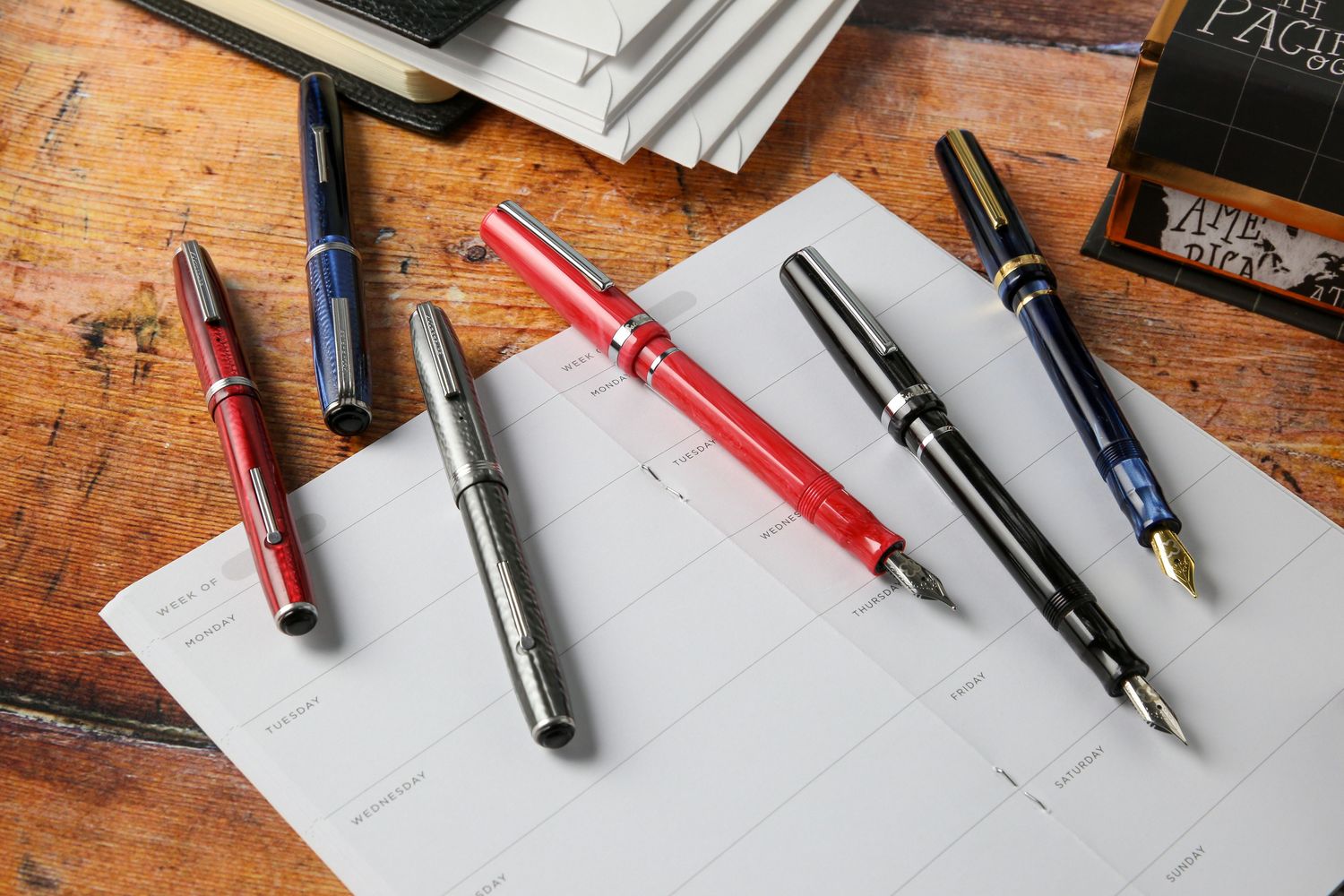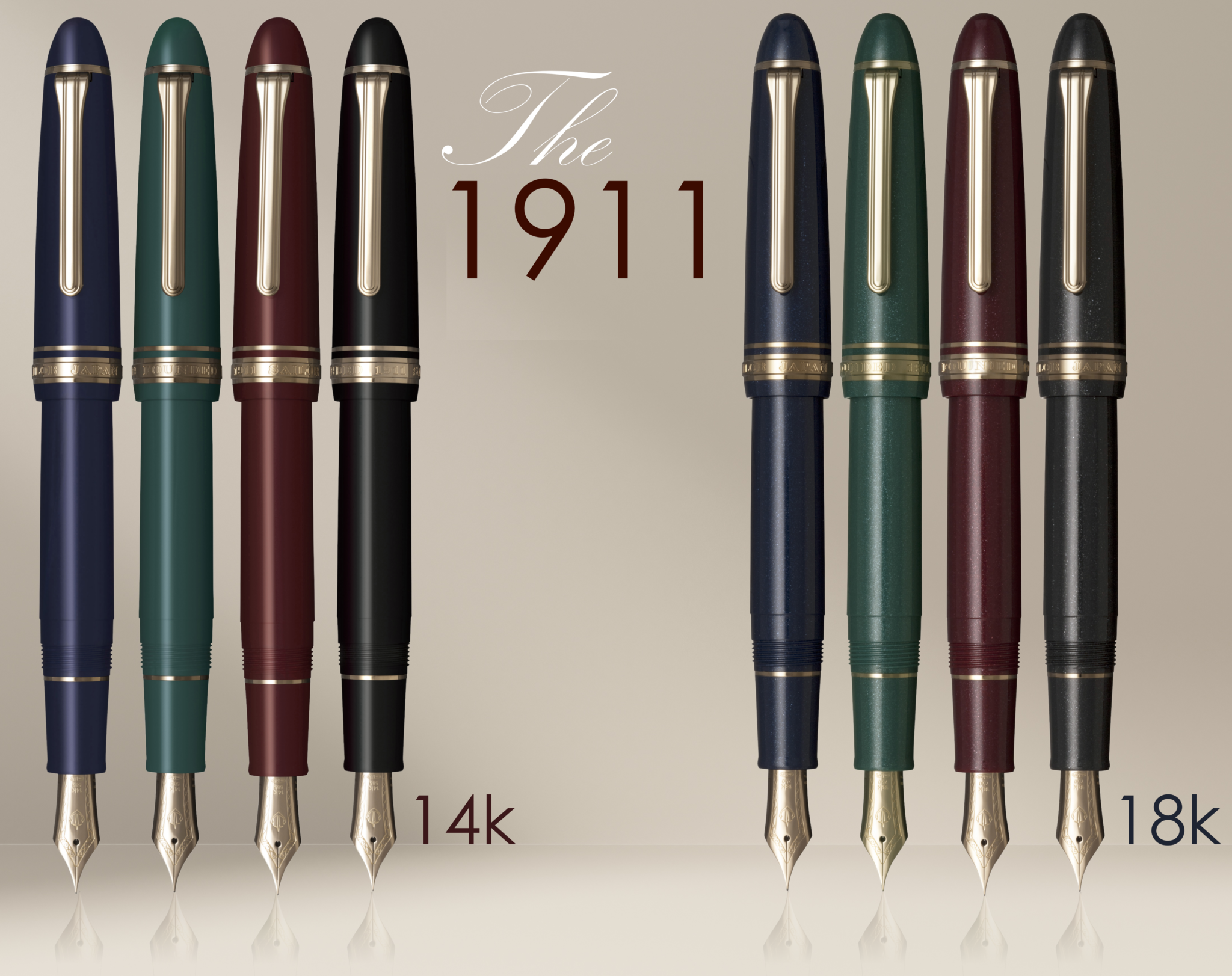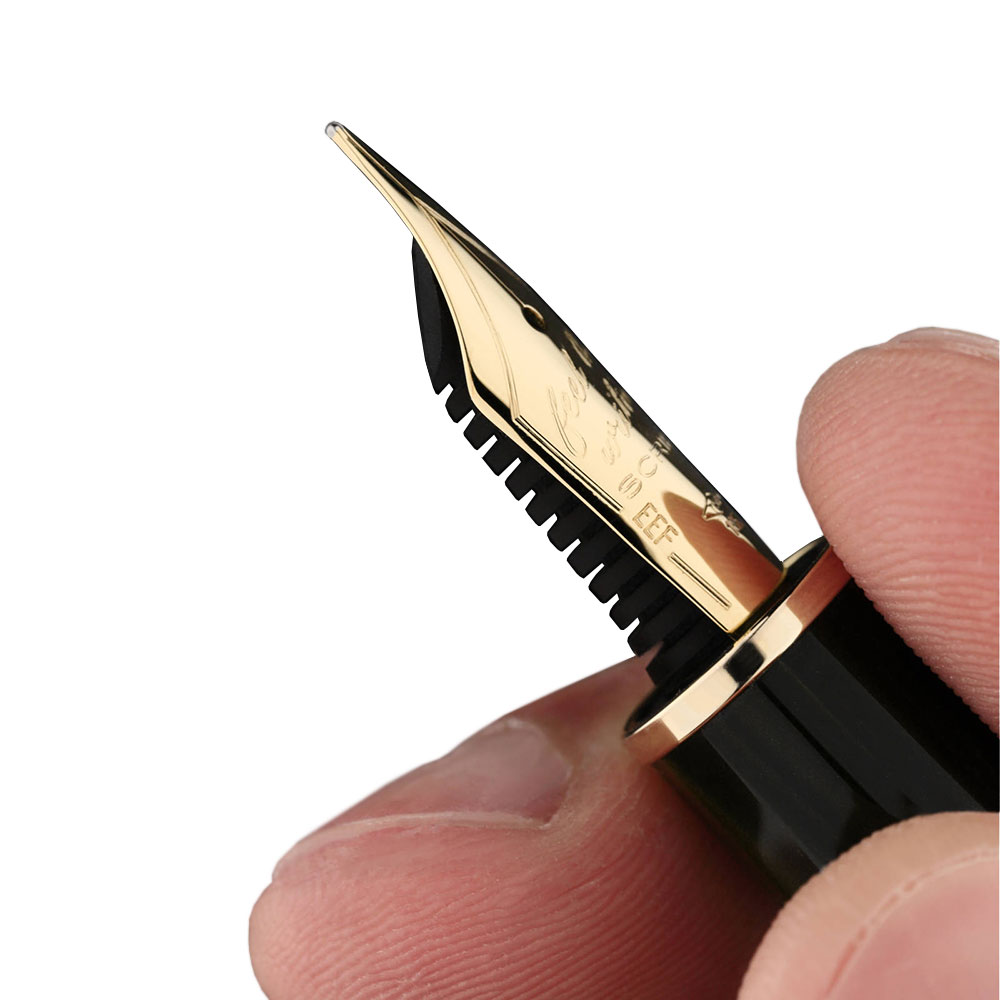If ever there was a fountain pen so beloved that modern collectors searched for them, or a fountain pen that is so highly regarded that some of the most notable historical 20th century figures used their pens, Esterbrook would be that pen. From a span of about 100 years, Esterbrook produced some of the most popular and most affordable writing tools in North America.

Esterbrook Beginnings
An English immigrant named Richard Esterbrook settled in the Northeastern United States in 1856 to begin a steel pen manufacturing company. At the time of the company’s birth in Philadelphia, Pennsylvania, Esterbrook named his business The United States Steel Pen Manufacturing Company, which produced inexpensive dip pens for consumers and offered a wide variety of steel nibs. It did not take long for Esterbrook to become the leading pen manufacturer in the United States. It was Esterbrook’s pen manufacturing process, designed in-house, which set the company apart from its competitors. This achievement was reflected when he changed his company name to The Esterbrook Steel Pen Manufacturing Company. Now based in Camden, New Jersey, Esterbrook only had 15 people on the company payroll at the beginning, which then expanded to employing 450 people and producing 600,000 pens per day at its zenith.
Richard Esterbrook passed away before he could see his company become wildly popular. The massive change in the Esterbrook Company products shifted during the 1920s when consumers grew weary of using dip pens and found themselves eager for fountain pens. The result over the next decades were fountain pens that suited just about every writer’s needs.


Dollar Pens
Between 1934 to 1942, Esterbrook produced Dollar Pens that were available in three sizes including full-sized (B), slender (A), and demi (H) versions and created of celluloid material. Dollar pens were widely available to fountain pen users and highly accessible since they only cost $1.00 US to purchase. To place this cost into context, that is roughly equal to $16.80 to $19.73 US today and the hourly wage when the pen was introduced was $.70, which is approximately $14 US per hour. The Dollar Pen’s cost, which was priced to compete with competitors, appealed to many pen users who at the time of the pen’s debut were dealing with the financial pressures of the Great Depression.


The J Pen
The Esterbrook J Pen, produced during the mid-1940s and into the 1950s, was Esterbrook’s most successful pen. Its unusual name may have come from its double jeweled design, though at the beginning of the Model J’s life, it only possessed a single jewel on the cap’s finial. Though the Model J went through several design phases, the double jeweled Esterbrook J was popular amongst fountain pen consumers. This pen came in various sizes to suit anyone’s writing preferences. There was a full-sized J for those with larger hands, as well as slender J (LJ), and a demi size J (SJ) for fountain pen users with smaller hands. Esterbrook also introduced the purse pens known as the C and CH models, which looked like smaller versions of the larger J models.
The Model J was well-built and sturdy with durable plastic bodies and strong metal components. Many Esterbrook J pens remain highly collectable today. If you peruse websites like eBay or Peyton Street Pens, or even scour antique malls and flea markets, it is not impossible to find a working Model J that still looks sharp.

Nibs for Everyone
One of the most exciting features about the Esterbrook J fountain pens was its nib changeability. Esterbrook dubbed their nib variability as Renew-points, perhaps to describe the ease that pen users could change their pen nibs and have an entirely different writing experience. Both the Dollar Pen and the Model J pen featured the ability to easily change nibs by simply screwing out of the grip section and replacing the nib with another option. There were several different nib options for just about every writing need, such as the 5284 Broad Stub for signatures or the 1550 Firm Extra Fine for accounting and bookkeeping. Esterbrook’s interchangeable nib system was so successful that other fountain pen companies created pens that were compatible with Esterbrook’s nibs.


Notable Esterbrook Users
During the mid-20th century, several notable figures donned an Esterbrook pen during important historical events. American presidents who famously used Esterbrook pens were John F. Kennedy and Lyndon B. Johnson. President Kennedy used an Esterbrook pen to sign a bill that increased NASA’s budget to fund the moon landing. President Johnson signed the Civil Rights Act using 70 custom Esterbrook presidential fountain pens, which were passed to several members in attendance.
Famous political figures were not the only Esterbrook pen users, several illustrators were increasingly dedicated to Esterbrook’s goods. When Charles M. Schultz, creator of the Peanuts comic strip, learned that the Esterbrook Radio 914 nib was discontinued, he made a point to purchase all remaining stock of his favorite nib. Carl Barks brought the famous Disney cartoon character Donald Duck to life using Esterbrook Radio 356 nibs. Barks dedication to Esterbrook started early on in his career and he was known to only use Esterbrook for his projects.


Modern Esterbrook
Today, Esterbrook experiences a strong revival thanks to Kenro Industries located in Mineola, New York, which is only a short 120 miles away from Esterbrook’s original residence in Camden, New Jersey. Kenro has revived the original company’s creative spirit through several new pen models that exemplify the quality that Esterbrook has always been known for. The wildly popular Estie embodies that imaginative spirit through several size and colorful material options. The nib choices are not as vast as they were nearly a decade ago. That issue has been remedied through occasional collaborations with expert nibmeisters who have introduced nibs dubbed Scribe and Journaler to recall nibs created for specialized writing experiences.

During the summer of 2020, Kenro expanded upon the Model J fountain pen. Differing from its popular Estie model, the JR which translates to J Reborn, was reintroduced as a fun pocket pen that recalls several features of the original model. The JR retains many of the original pen’s hallmarks, but also introduces a sophisticated spin for 21st century writers. You have not seen the last of the Esterbrook JR though—a little birdie told me that there is more to come soon, and this pen might just fly into your pocket, much like the other Esterbrook models that have flown into many writer’s collections.
Resources and photographs
theesterbrookproject.com
vintagepens.com/Esterbrook.shtml
Esterbrookpens.com
richardspens.com/ref/profiles/j.htm
Esterbrook.net
wellappointeddesk.com/2018/11/intro-to-vintage-esterbrooks/
peytonstreetpens.com
*Special thanks to Bryan Hulser at Kenro Industries for letting me pick his brain.
Condividi:
- Click to share on X (Opens in new window) X
- Click to share on Facebook (Opens in new window) Facebook
- Click to share on WhatsApp (Opens in new window) WhatsApp
- Click to share on LinkedIn (Opens in new window) LinkedIn
- Click to share on Pinterest (Opens in new window) Pinterest
- Click to share on Telegram (Opens in new window) Telegram
- Click to email a link to a friend (Opens in new window) Email




Leave a Reply